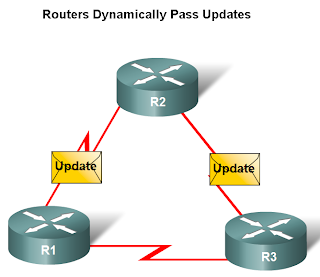Objectives
– Best Path Selections
– Forwarding packets to destination
Introducing the Topology
– 3 1800 series routers connected via WAN links
– Each router connected to a LAN represented by a switch and a PC
Connections of a Router for WAN
- Define the general role a router plays in networks.
- Describe the directly connected networks, different router interfaces.
- Examine directly connected networks in the routing table and use the CDP protocol.
- Describe static routes with exit interfaces.
- Describe summary and default route.
- Examine how packets get forwarded when using static routes.
- Identify how to manage and troubleshoot static routes.
– Best Path Selections
– Forwarding packets to destination
Introducing the Topology
– 3 1800 series routers connected via WAN links
– Each router connected to a LAN represented by a switch and a PC
Connections of a Router for WAN
– A router has a DB-60 port that can support 5 different cabling
standards
Connections of a Router for Ethernet
– 2 types of connectors can be used: Straight through and Cross-over
• Straight through used to connect:
– Show IP router command – used to view routing table
– Show Interfaces command – used to show status of an interface
– Show IP Interface brief command – used to show a portion of the interface information
– Show running-config command – used to show configuration file in RAM
Configuring an Ethernet interface
– By default all serial and Ethernet interfaces are down
– To enable an interface use the No Shutdown command
standards
Connections of a Router for Ethernet
– 2 types of connectors can be used: Straight through and Cross-over
• Straight through used to connect:
– Switch-to-Router, Switch-to-PC, Router-to-Server, Hub-to-PC, Hub-to-Server• Cross-over used to connect:
– Switch-to-Switch, PC-to-PC, Switch-to-Hub, Hub-to- Hub, Router-to-RouterExamining Router Interfaces
– Show IP router command – used to view routing table
– Show Interfaces command – used to show status of an interface
– Show IP Interface brief command – used to show a portion of the interface information
– Show running-config command – used to show configuration file in RAM
Configuring an Ethernet interface
– By default all serial and Ethernet interfaces are down
– To enable an interface use the No Shutdown command
Next, please download the links Below
or




























